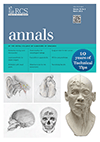
Arthroplasty
THA: Fewer stem malpositions and gait anomalies following posterior approach
This report has been verified
by one or more authors of the
original publication.
Ann R Coll Surg Engl. 2015 Jan;97(1):11-6.
3 randomized controlled trials and 3 prospective cohort studies were included in this systematic review and meta-analysis comparing the posterior and direct lateral approaches to total hip arthroplasty. Rate of dislocation, Trendelenburg gait, incidence of heterotopic ossification, and functional outcomes were assessed. The results of this analysis demonstrated that the posterior approach to total hip arthroplasty yielded lower rates of postoperative limping and stem malposition. A non-significant reduction in the rate of dislocation and heterotopic ossification was also noted with the posterior approach. Due to the paucity of high quality evidence evaluating these procedures results should be interpreted with caution and further randomized control trials should be conducted.
Unlock the full article
Get unlimited access to OrthoEvidence with a free trial
Start TrialCritical appraisals of the latest, high-impact randomized controlled trials and systematic reviews in orthopaedics
Access to OrthoEvidence podcast content, including collaborations with the Journal of Bone and Joint Surgery, interviews with internationally recognized surgeons, and roundtable discussions on orthopaedic news and topics
Subscription to The Pulse, a twice-weekly evidence-based newsletter designed to help you make better clinical decisions
Exclusive access to original content articles, including in-house systematic reviews, and articles on health research methods and hot orthopaedic topics
Or continue reading this full article
Register Now

Subscribe to "The Pulse"
Evidence-Based Orthopaedics direct to your inbox.





































